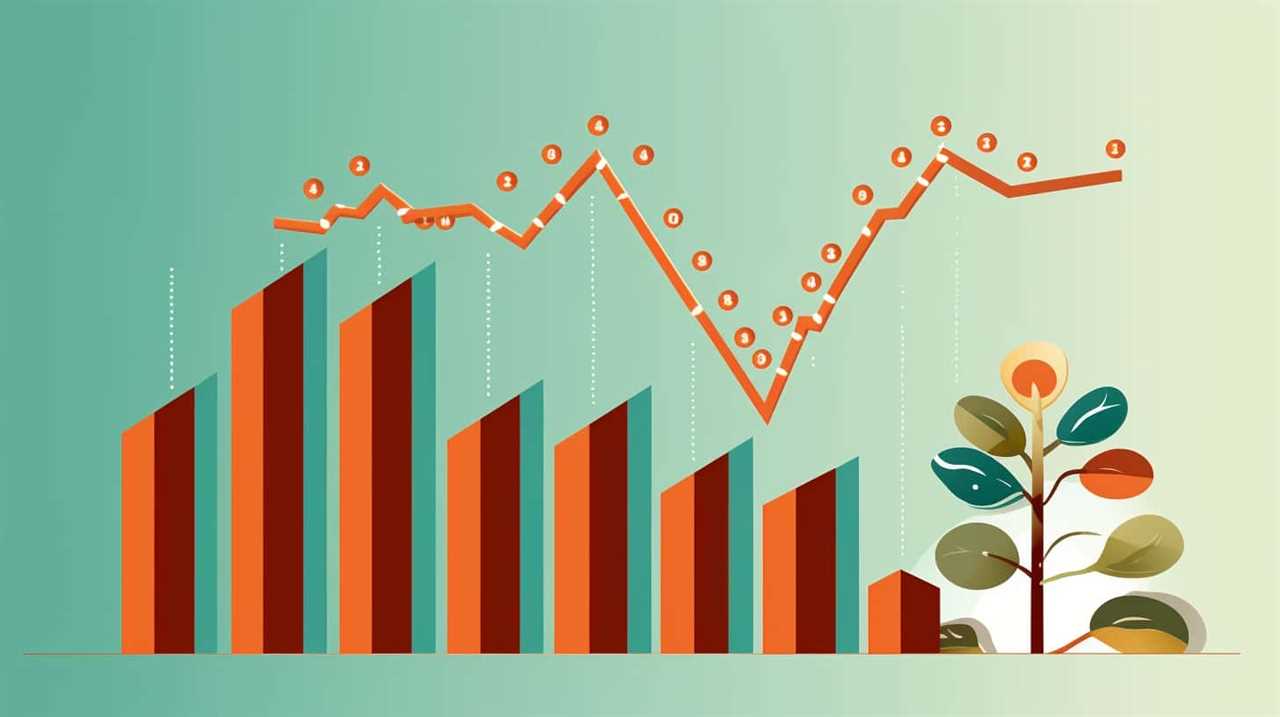Are you prepared to elevate your winery to the next level?
Well, pour yourself a glass and buckle up because we’re about to dive into the world of Google Ads for local wineries.
With our expertise, you’ll learn how to target the right audience, craft compelling ad copy, and choose the perfect keywords.
We’ll show you how to maximize your ad budget and leverage local search ads to boost sales.

So, let’s uncork this digital success and watch your winery flourish!
Key Takeaways
- Google Ads allows wineries to target potential customers based on location and reach the right audience.
- Wineries can maximize ad performance and budget by choosing the right keywords, optimizing ad targeting, and constantly testing and refining ads.
- Enhancing ads with extensions and optimizing landing pages can improve ad visibility and conversion rates.
- Tracking, analyzing, and retargeting strategies help wineries optimize ad performance and reach their target audience more effectively.
The Benefits of Google Ads for Wineries
One of the key advantages of using Google Ads for wineries is the ability to target potential customers based on their location. This targeting feature allows wineries to focus their advertising efforts on a specific geographic area, ensuring that their message reaches the right audience. By targeting local consumers, wineries can effectively promote their products to those who are most likely to visit their establishment or purchase their wines.
Not only does Google Ads allow wineries to target local consumers, but it also provides valuable tools for measuring ad performance. Through the platform’s analytics and reporting features, wineries can track important metrics such as click-through rates, conversions, and return on ad spend. This data allows wineries to evaluate the effectiveness of their ads and make data-driven decisions to optimize their campaigns.
By harnessing the power of Google Ads, wineries can take their marketing efforts to the next level. With the ability to target local consumers and measure ad performance, wineries can ensure that their advertising dollars are being spent wisely and generating tangible results.

In the next section, we’ll dive deeper into the topic of targeting the right audience with Google Ads, exploring strategies and best practices for maximizing the impact of winery advertisements.
Targeting the Right Audience With Google Ads
When it comes to running successful Google Ads campaigns for local wineries, targeting the right audience is crucial. By employing effective ad targeting strategies, wineries can ensure that their ads are reaching the right people at the right time.
This can be achieved through local audience segmentation, where wineries can narrow down their target audience based on location, interests, and demographics. By maximizing ad relevance and tailoring the messaging to the specific needs and preferences of their audience, wineries can increase their chances of attracting potential customers and driving them to take action.
Ad Targeting Strategies
To effectively target the right audience with Google Ads, we employ specific ad targeting strategies for local wineries. When it comes to ad placement, we carefully select the websites, apps, and YouTube videos where our ads will appear. By choosing platforms that attract wine enthusiasts and potential customers, we increase the chances of reaching the right audience.

Additionally, we implement ad bidding strategies to optimize our budget and maximize our ad exposure. This includes adjusting our bids based on factors like keywords, device type, and location to ensure that our ads are shown to the most relevant users.
Local Audience Segmentation
We employ specific ad targeting strategies for local wineries to ensure we reach the right audience with Google Ads. Local audience engagement is crucial for the success of these wineries, and that’s why we use geo targeting strategies to effectively reach potential customers in the surrounding area. By segmenting the local audience, we can tailor our ads to specific groups based on their location, interests, and demographics. This allows us to create personalized and relevant ads that are more likely to resonate with the target audience, increasing the chances of engagement and conversions. Our goal is to maximize the ROI for local wineries by reaching the right people at the right time with the right message.
| Geo Targeting Strategies |
|---|
| Location-based targeting |
| Demographic targeting |
| Interest-based targeting |
In the next section, we will discuss how we maximize ad relevance to further optimize the performance of Google Ads campaigns.
Maximizing Ad Relevance
To maximize ad relevance and effectively target the right audience with Google Ads, we employ specific strategies that ensure our ads resonate with potential customers in the local area. Our approach includes ad relevance optimization and improving ad quality to increase the chances of capturing the attention of the right audience.

Here are three key strategies we use:
- Keyword research: We conduct thorough keyword research to understand the search terms potential customers are using when looking for wineries in their local area. By incorporating these keywords into our ads, we increase the relevancy and visibility of our ads to the target audience.
- Geographic targeting: We utilize location targeting features in Google Ads to focus our ads on the specific geographic areas where our target audience is located. This allows us to reach potential customers who are more likely to visit our winery due to their proximity.
- Audience segmentation: We create audience segments based on demographics, interests, and online behaviors to further refine our targeting. By tailoring our ads to specific segments, we can deliver more personalized and relevant messages that resonate with each audience group.
By implementing these strategies, we can maximize the relevance of our ads and effectively target the right audience, increasing the chances of attracting potential customers to our winery.
Now, let’s explore how we craft compelling ad copy for wineries.
Crafting Compelling Ad Copy for Wineries
Crafting compelling ad copy for wineries starts with understanding the unique selling points and audience preferences. As a winery owner, it is crucial to convey the essence of your brand and entice potential customers with your ad headlines. To help you create engaging ad copy, we have compiled a list of ad copywriting techniques for wineries and tips for creating captivating ad headlines for local wineries.

| Ad Copywriting Techniques for Wineries | Creating Engaging Ad Headlines for Local Wineries |
|---|---|
| Use descriptive language to highlight the flavors, aromas, and characteristics of your wines | Discover the Perfect Blend: Experience Our Award-Winning Wines Today! |
| Showcase any awards or accolades your winery has received | Taste the Excellence: Voted Best Winery of the Year |
| Emphasize the unique experiences or events offered at your winery | Unwind and Indulge: Join Us for a Memorable Wine Tasting Experience |
| Create a sense of urgency or exclusivity with limited-time offers or exclusive promotions | Limited Edition Release: Don’t Miss Your Chance to Try Our Exclusive Reserve |
Choosing the Right Keywords for Your Ads
To maximize the effectiveness of our Google Ads campaigns, it’s essential to carefully select the most appropriate keywords for our winery advertisements. The right keywords can make all the difference in maximizing ad performance and improving ad targeting.
Here are three key considerations to keep in mind when choosing keywords for your winery ads:
- Relevance: Choose keywords that are directly related to your winery and the products or services you offer. This ensures that your ads are shown to people who are actively searching for what you have to offer.
- Search Volume: Look for keywords that have a high search volume. This means that a significant number of people are searching for those specific terms, increasing the chances of your ads being seen by a larger audience.
- Competition: Consider the level of competition for each keyword. Using highly competitive keywords may result in higher costs per click and make it harder for your ads to stand out. Look for a balance between relevance and competition to find the sweet spot for your winery ads.
By carefully selecting keywords that are relevant, have a high search volume, and strike a balance with competition, you can optimize your winery ads for maximum effectiveness.
Now, let’s move on to the next section and explore how to maximize your ad budget for optimal results.

Maximizing Ad Budget for Optimal Results
Now let’s delve into how we can make the most of our ad budget to achieve optimal results for our local winery.
Ad budget optimization plays a crucial role in ensuring that our Google Ads campaign delivers the best possible return on investment. By carefully tracking ad performance, we can identify which ads are generating the most clicks, conversions, and revenue. This data allows us to allocate our budget more effectively, focusing on the ads that are driving the highest return.
One key aspect of ad budget optimization is understanding the lifetime value of our customers. By analyzing the average revenue generated by each customer over their lifetime, we can determine how much we’re willing to spend to acquire new customers. This information helps us set realistic and profitable bids for our ads.
Another strategy for maximizing our ad budget is to constantly test and refine our ads. By running A/B tests, we can compare different ad variations and identify which ones perform best. This iterative process allows us to continuously improve our ad copy, targeting, and bidding strategies, ultimately driving better results with the same budget.

In addition, we can leverage advanced targeting options offered by Google Ads to reach our most valuable audience segments. By narrowing our targeting to specific demographics, locations, or interests, we can ensure that our ads are shown to the right people, increasing the chances of conversion and maximizing the efficiency of our ad budget.
To summarize, ad budget optimization is crucial for achieving optimal results with our Google Ads campaign. By tracking ad performance, understanding customer lifetime value, constantly testing and refining our ads, and leveraging advanced targeting options, we can make the most of our budget and drive success for our local winery.
Using Ad Extensions to Enhance Your Ads
As we delve deeper into optimizing our Google Ads campaign for our local winery, let’s explore how we can enhance our ads by using ad extensions. Ad extensions are additional pieces of information that can be added to your ads to make them more informative and compelling.
Here are some ad extension best practices to consider:

- Sitelink Extensions: These allow you to add additional links to specific pages on your website, such as your wine selection, tasting room, or events page. This gives users more options and increases the chances of them clicking on your ad.
- Callout Extensions: These allow you to highlight key selling points or unique features of your winery, such as award-winning wines, picturesque vineyards, or a welcoming atmosphere. This helps to differentiate your winery from competitors and attract potential customers.
- Review Extensions: These allow you to showcase positive reviews or testimonials from satisfied customers. This adds credibility to your winery and can influence potential customers to choose your establishment over others.
Measuring ad extension performance is crucial to ensure that they’re effectively enhancing your ads. Use metrics such as click-through rate (CTR), conversion rate, and cost per conversion to evaluate the performance of your ad extensions. Make adjustments based on the data to optimize their impact and drive better results for your winery.
Optimizing Landing Pages for Conversions
Let’s continue enhancing our Google Ads campaign for our local winery by optimizing our landing pages for conversions. One of the most crucial aspects of a successful digital marketing strategy is having a well-designed website that encourages visitors to take action. By improving website design, we can create a seamless user experience that leads to higher conversion rates.
One effective way to optimize our landing pages is through A/B testing. This involves creating multiple versions of our landing page and testing them to see which one performs better. By comparing the results, we can identify which design elements, headlines, or call-to-action buttons resonate more with our audience.
When conducting A/B tests, it’s essential to only test one variable at a time to accurately determine its impact on conversions. This could include testing different layouts, colors, or even different copywriting techniques. By making small, incremental changes and analyzing the results, we can gradually improve our landing pages and achieve higher conversion rates.

Tracking and Analyzing Ad Performance
To continue improving our Google Ads campaign for our local winery, we need to delve into the crucial task of tracking and analyzing our ad performance. Tracking ad performance is essential to understanding which strategies are effective and which ones need adjustment. By analyzing ad performance metrics and conversion tracking, we can gain valuable insights into the success of our ads and make data-driven decisions for future optimizations.
Here are three key areas to focus on when tracking and analyzing ad performance:
- Click-through rate (CTR): This metric measures the percentage of people who click on our ads after seeing them. A high CTR indicates that our ads are compelling and resonating with our target audience.
- Conversion rate: This metric tells us how successful our ads are in converting viewers into customers. By tracking the conversion rate, we can identify areas where our ads may be falling short and make necessary improvements.
- Cost per acquisition (CPA): This metric calculates the average cost of acquiring a new customer through our ads. By monitoring the CPA, we can ensure that our ads are cost-effective and provide a positive return on investment.
By closely monitoring these ad performance metrics and using conversion tracking, we can make informed decisions to optimize our Google Ads campaign and maximize our advertising efforts.
Now, let’s explore retargeting strategies for wineries and how they can further enhance our digital success.

Retargeting Strategies for Wineries
Now, we’ll delve into how we can effectively retarget our ads to further enhance our digital success as wineries. Ad retargeting strategies play a crucial role in keeping our brand top-of-mind and increasing conversions. By strategically targeting users who’ve previously interacted with our website or shown interest in our products, we can maximize our advertising efforts and drive more sales.
One of the key components of successful retargeting is conversion tracking. By implementing conversion tracking for wineries, we can gain valuable insights into the effectiveness of our ads and optimize our campaigns accordingly. Conversion tracking allows us to track actions such as purchases, sign-ups, or inquiries made by users who clicked on our ads. This data enables us to determine which ads or keywords are driving the most valuable actions, and adjust our targeting and messaging accordingly.
To effectively retarget our ads, we can create custom audiences based on specific actions users have taken on our website. For example, we can retarget users who’ve added items to their cart but haven’t completed the purchase. By showing them personalized ads with a special offer or reminder, we can nudge them towards making the final purchase.
Another effective retargeting strategy is to create lookalike audiences. These audiences are based on the characteristics of our existing customers, allowing us to target users who’ve similar interests and behaviors. This helps us expand our reach and target new potential customers who are likely to be interested in our wines.

Adapting Ads for Mobile Users
When it comes to advertising for local wineries, it’s crucial to adapt ads for mobile users.
Mobile ad optimization is essential in reaching potential customers who are always on the go.
Mobile Ad Optimization
We optimize our ads to cater to mobile users’ preferences and ensure a seamless browsing experience. Mobile ad targeting is an essential part of our strategy, as more and more consumers are using their smartphones to search for wineries and plan their visits.
To ensure our ads are effective on mobile devices, we employ the following tactics:

- Responsive Design: Our ads are designed to adapt to different screen sizes and resolutions, ensuring they look great on any mobile device.
- Quick Load Times: We optimize our ads to load quickly on mobile devices, reducing the risk of users abandoning the page.
- Clear Call-to-Actions: We make sure our ads have clear and compelling calls-to-action that are easy to tap on mobile screens.
By constantly monitoring ad performance analysis, we can make data-driven decisions to further optimize our mobile ads for maximum impact.
Now, let’s dive into the next section, where we’ll explore targeting mobile wine enthusiasts.
Targeting Mobile Wine Enthusiasts
Continuing our efforts to target mobile wine enthusiasts, we adapt our ads for optimal performance on mobile devices.
With the rise of smartphones and the increasing number of people using their mobile devices to search for information and make purchases, it’s crucial for wineries to have a strong presence on mobile platforms.

Our ads are designed to capture the attention of wine lovers on the go, enticing them with the promise of unforgettable mobile wine tours and exceptional wine tasting experiences.
We create visually appealing and engaging ads that are specifically tailored for mobile screens, ensuring that they load quickly and provide a seamless user experience.
By adapting our ads for mobile users, we’re able to reach a wider audience and drive more traffic to winery websites.
Now, let’s delve into the next section and explore the power of leveraging local search ads for wineries.

Leveraging Local Search Ads for Wineries
One of the key strategies for local wineries to drive digital success is leveraging the power of local search ads. With the increasing number of people using search engines to find local businesses, it’s crucial for wineries to have a strong online presence. By utilizing local search ads, wineries can effectively target potential customers who are actively searching for wine-related products and experiences in their area.
Here are three ways wineries can leverage local search ads to maximize advertising effectiveness and measure campaign success:
- Target specific keywords: By selecting relevant keywords related to wineries, wine tastings, and wine tours, wineries can ensure their ads are shown to the right audience at the right time.
- Utilize location targeting: Wineries can target their ads to specific geographic areas, ensuring they’re reaching potential customers who are in close proximity to their location.
- Monitor and analyze data: By regularly monitoring and analyzing the performance of their local search ad campaigns, wineries can gain valuable insights into what’s working and what needs improvement. This data can help them make informed decisions to optimize their advertising efforts.
By leveraging local search ads, wineries can effectively reach their target audience, increase brand visibility, and drive more foot traffic to their tasting rooms.
Transitioning to the next section, wineries can also integrate Google Ads with social media to further enhance their digital marketing strategy.

Integrating Google Ads With Social Media
When it comes to integrating Google Ads with social media, there are several key points to consider.
First, by targeting specific demographics on platforms like Facebook and Instagram, wineries can ensure that their ads reach the right audience at the right time.
Second, this integration allows for the amplification of brand visibility, as ads can be seen by social media users who may not have otherwise come across the winery’s website or online presence.
Lastly, by leveraging the power of both Google Ads and social media, wineries can maximize their advertising return on investment (ROI) by reaching a wider audience and driving more conversions.

Targeting Specific Demographics
We integrate Google Ads with social media to target specific demographics effectively. By combining the power of Google’s ad targeting techniques with the reach of popular social media platforms, wineries can ensure their ads reach the right audience at the right time.
Here are three ways we use this integration to maximize results:
- Segmentation: We leverage the data available on social media platforms to segment audiences based on demographics such as age, location, and interests. This allows us to create tailored ad campaigns that resonate with specific groups of people.
- Retargeting: Through the integration of Google Ads with social media, we can retarget users who’ve previously interacted with winery-related content. This helps us maintain brand visibility and increase the likelihood of conversion.
- Lookalike Audiences: By analyzing the characteristics and behaviors of existing customers, we can create lookalike audiences on social media platforms. These audiences consist of individuals who share similar traits to the winery’s target demographic, increasing the chances of reaching niche audiences.
Amplifying Brand Visibility
To amplify brand visibility, we integrate Google Ads with social media platforms, effectively reaching a wider audience and maximizing digital advertising success. By combining the power of Google Ads with the massive reach of social media, local wineries can significantly increase their online presence and engage with potential customers on a more personal level.
Social media platforms like Facebook, Instagram, and Twitter provide an excellent opportunity to showcase the unique aspects of a winery, such as its picturesque vineyards or award-winning wines. By strategically placing Google Ads on these platforms, wineries can capture the attention of users who are already interested in wine-related content. This targeted approach ensures that the right audience sees the ads, increasing the chances of customer engagement and conversions.

Moreover, integrating Google Ads with social media allows wineries to leverage the power of social sharing. When users come across an engaging ad, they’re more likely to share it with their friends and followers, further amplifying the winery’s brand visibility. This word-of-mouth marketing can have a significant impact on increasing customer engagement and driving more traffic to the winery’s website or physical location.
Maximizing Advertising ROI
By integrating Google Ads with social media, we can maximize the advertising ROI for local wineries. This powerful combination allows wineries to reach a wider audience and engage with potential customers in a more targeted manner.
Here are three ways in which integrating Google Ads with social media can help local wineries maximize their advertising ROI:
- Increased brand visibility: By running Google Ads campaigns that drive traffic to social media platforms, wineries can increase their brand visibility and reach a larger audience.
- Enhanced audience targeting: Social media platforms provide valuable insights into user demographics and interests. By integrating Google Ads with social media, wineries can leverage this data to create highly targeted campaigns that reach the right audience at the right time.
- Improved ad performance analysis: Integrating Google Ads with social media allows wineries to track the performance of their ads more effectively. They can analyze metrics such as click-through rates, conversions, and engagement levels to make data-driven decisions and optimize their advertising budget.
By leveraging the power of social media in conjunction with Google Ads, wineries can maximize their advertising ROI and achieve digital success.

Now, let’s explore how wineries can further boost their sales with Google Shopping Ads.
Boosting Sales With Google Shopping Ads
Using Google Shopping Ads can significantly increase sales for local wineries. These ads allow wineries to showcase their products directly on Google search results, making it easier for potential customers to discover and purchase their wines. By leveraging Google Shopping Ads, wineries can effectively boost website traffic and increase online conversions.
One of the main advantages of Google Shopping Ads is that they provide wineries with a visually appealing and informative way to present their products. When users search for wine-related keywords on Google, they’re presented with a carousel of product images, prices, and relevant information. This not only catches the attention of users but also helps them make informed purchase decisions.
Additionally, Google Shopping Ads make it easier for wineries to target their ideal audience. These ads can be customized based on location, interests, and other demographics, ensuring that they reach the right people at the right time. This targeted approach increases the chances of converting website visitors into paying customers.

Furthermore, Google Shopping Ads provide wineries with detailed insights and analytics. Wineries can track the performance of their ads, including click-through rates, conversions, and return on investment. This data allows wineries to make data-driven decisions and optimize their ads for better results.
Monitoring and Adjusting Ads for Success
As we monitor and adjust our Google Shopping Ads, we can optimize our targeting and messaging to drive even greater success for local wineries. It’s crucial to keep a close eye on our ad performance and make necessary adjustments to ensure we’re reaching our desired audience and maximizing our return on investment. Here are three key factors to consider when monitoring and adjusting ads for success:
- Adjusting ad frequency: It’s important to strike the right balance when it comes to how often our ads are shown. By analyzing data and customer behavior, we can determine the optimal frequency for our ads. This ensures that we aren’t overwhelming potential customers with too many ads, while still maintaining a presence that keeps our winery top of mind.
- Ad placement optimization: Where our ads appear on the search results page can greatly impact their visibility and effectiveness. By monitoring the performance of different ad placements, we can identify the most successful positions and allocate our budget accordingly. This allows us to maximize exposure and increase the chances of attracting potential customers.
- A/B testing: Testing different variations of our ads can provide valuable insights into what resonates best with our target audience. By experimenting with different messaging, visuals, or calls-to-action, we can identify the most effective combinations. This continuous testing and optimization process ensures that our ads are always performing at their best.
Frequently Asked Questions
How Can Wineries Use Google Ads to Boost Sales?
To boost sales, wineries can use Google Ads by targeting local customers and optimizing ad content. This allows us to reach a wider audience and showcase our unique offerings, enticing them to visit our winery and make a purchase.
What Are Some Strategies for Retargeting Winery Ads?
Retargeting winery ads is a crucial strategy for maximizing ad spend. By reaching out to past visitors and reminding them of our offerings, we can increase conversions and drive more sales.

How Can Wineries Integrate Google Ads With Social Media?
To integrate Google Ads with social media, wineries can use targeting techniques to reach their desired audience. By leveraging the power of both platforms, wineries can maximize their online presence and drive more traffic and sales.
What Are Some Tips for Monitoring and Adjusting Winery Ads for Optimal Success?
Monitoring and adjusting winery ads for optimal success: A guide for local businesses. We’ve got the tips and tricks you need to optimize your winery ads in the digital space. Let’s pour into digital success together!
How Can Wineries Use Google Shopping Ads to Increase Sales?
To increase sales, wineries can use Google Shopping Ads to target local customers. These ads have a high ROI and can effectively showcase products. By leveraging this powerful tool, wineries can reach a wider audience and drive more conversions.
Conclusion
In conclusion, Google Ads can be a game-changer for local wineries looking to thrive in the digital world. With the ability to target the right audience, craft compelling ad copy, and choose the right keywords, wineries can maximize their ad budget for optimal results.

An interesting statistic to note is that wineries that leverage local search ads see an average increase of 30% in website visits, leading to higher brand awareness and potential sales.
So, if you’re a winery looking to boost your online presence, Google Ads is the way to go.










